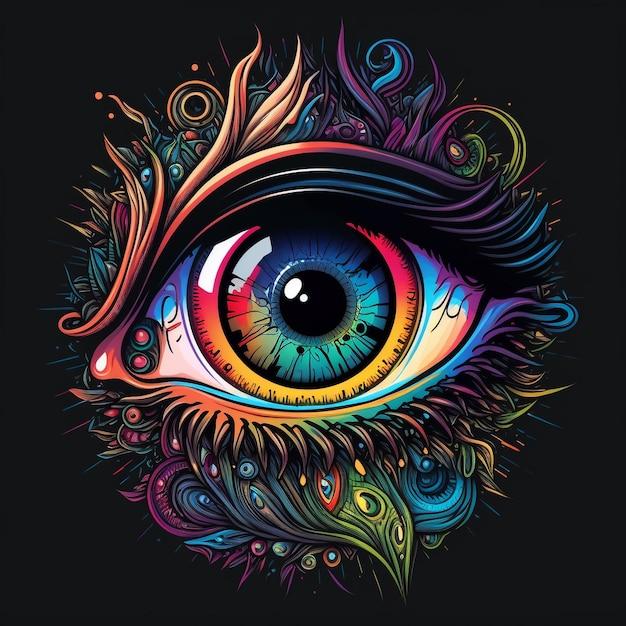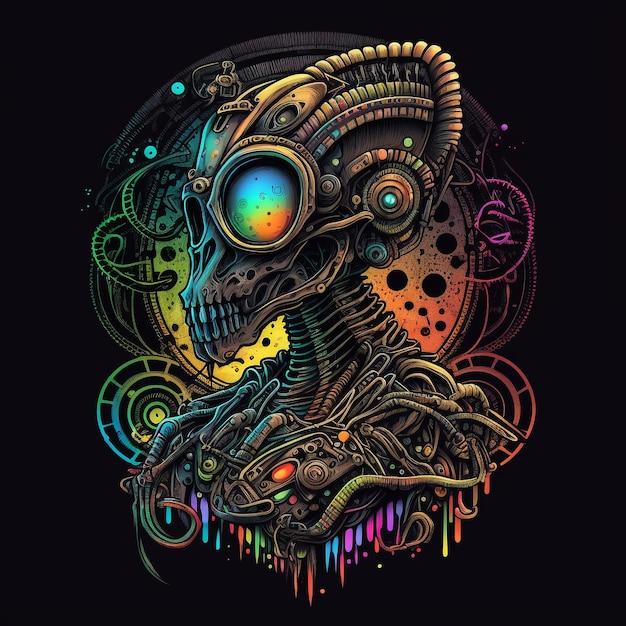Art has always been a medium of expression, a way for artists to communicate their thoughts, emotions, and messages to the world. But what if there was no audience to receive and interpret this art? Would it still hold the same significance? These are some of the intriguing questions that arise when pondering the relationship between art and its audience.
In this blog post, we will delve into the depths of this thought-provoking topic and explore the various dimensions of art’s existence without an audience. We will discuss the role of the audience in art, the concept of art without a recognizable subject matter, the artist’s intentions in creating art, and the wider implications of art’s absence. Join us as we unravel the intricacies and enticing possibilities that this exploration offers.
So, are you ready to embark on this journey into the realm of art and its connection with the audience? Let’s dive in and discover the captivating wonders that lie within the realm of art’s existence without an audience.
Can Art Exist Without an Audience
Art has been a medium of expression for centuries, captivating and moving audiences with its beauty and emotion. But, have you ever wondered if art can still be art without an audience? This intriguing question challenges the very essence of what we perceive art to be. So, let’s dive into the fascinating world of art and explore whether it can exist in isolation or if it needs an audience to truly come alive.
Art and Its Connection to the Audience
Art has always been intertwined with the viewer’s perception and interpretation. The artist creates a piece, pouring their heart and soul into it, but it is the audience that completes the circle. Art invites us on a journey, a shared experience where emotions are evoked and connections are made. Whether it is a painting that takes your breath away or a sculpture that leaves you pondering, it is the audience’s engagement that gives art its purpose.
The Power of Solitude: Art in Isolation
While the connection between art and the audience is undeniable, there is a school of thought that believes art can exist in isolation. Think of the masterpieces tucked away in the archives of museums, awaiting discovery by future generations. These works of art maintain their intrinsic value, even without immediate viewership. They stand as a testament to the power and enduring quality of art, capable of transcending time and space.
The Digital Revolution: Art in the Age of Technology
In today’s digital age, the relationship between art and its audience has taken on a new dimension. Online platforms and social media have provided artists with avenues to showcase their work, reaching a global audience with just a click. The digital realm has opened up possibilities for art to exist and thrive without the physical presence of an audience. From virtual exhibitions to digital installations, technology has challenged our preconceived notions of art and its dependence on a traditional audience.
The Essence of Art: Creation versus Consumption
At its core, art is an act of creation, a way for an artist to channel their ideas, thoughts, and emotions into a tangible form. It is this creative drive that fuels the artistic process, regardless of whether or not an audience is present. Artists create art for themselves, as a means of self-expression and exploration. While an audience adds another layer to the experience, the essence of art lies in the act of creation itself.
The Gray Area: Art Between Creation and Perception
While art can exist without an audience, it is in the realm between creation and perception that its true power lies. The act of sharing art with others imbues it with new perspectives, interpretations, and emotions. The artist’s intent may be one thing, but it is the audience that breathes life into the work, infusing it with their own unique experiences. Art becomes a dialogue, a conversation between the artist and the viewer, blurring the lines between creator and audience.
So, can art exist without an audience? The answer is complex, as art has the ability to adapt and transform in the face of changing times. While an audience undoubtedly adds depth and meaning to art, it is the act of creation and the artist’s vision that give art its essence. Art can survive in isolation, evolve with technology, or thrive in the dialogue between artist and audience. Ultimately, the beauty of art lies in its ability to transcend boundaries, connect us to the human experience, and inspire us, whether there’s an audience or not.
FAQ: Can Art Exist Without an Audience
Art is inherently intertwined with human perception and interpretation. The audience plays a crucial role in the existence and impact of art. In this FAQ-style subsection, we will delve into common questions regarding the relationship between art and its audience.
Should Artists Be Socially Responsible
Artists have the power to influence society through their creations. While not mandatory, many artists embrace social responsibility. They use their talents to shed light on pressing issues, challenge norms, and inspire change.
How Is Art Used to Impact the Views of a Society
Art has the ability to provoke thought, spark conversation, and challenge societal perspectives. Through various mediums such as paintings, sculptures, music, and performances, artists can shape public opinion, raise awareness, and address social, political, and cultural matters.
Does Art Need to Be Explained
Art can be open to interpretation, and often, explanations enhance the viewer’s understanding and appreciation. However, it is not necessary for artists to provide explicit explanations. Sometimes, leaving the interpretation to the audience fosters personal connection and encourages diverse responses.
Do Artists Have Moral Responsibilities
The concept of moral responsibility for artists is subjective. While some argue that artists bear a moral obligation to reflect ethical values in their work, others maintain that art should be free from moral constraints, allowing for exploration and expression.
What Is the Role of the Audience in Art
The audience completes the artistic experience. They provide feedback, interpretations, and emotional responses that contribute to the overall significance of the artwork. The audience’s engagement and interaction bring art to life.
What Is Art That Has No Recognizable Subject Matter
Abstract art challenges traditional notions of representation by depicting shapes, colors, and forms that may not have a direct correlation to recognizable subject matter. It invites viewers to explore their own interpretations and emotional connections beyond the confines of realism.
Is There Art Without the Artist
Artwork can exist independently of the artist if it maintains its aesthetic and expressive qualities. However, the artist’s intentions and artistic perspective often shape the context and meaning of the artwork.
What Does the Artist Want the Viewer to Perceive
Artists aspire to evoke emotions, provoke thoughts, and create connections with the viewer. They craft their artwork with the hope that it will resonate and communicate their intended messages, stories, or concepts.
What Would Happen if Art Did Not Exist
Art adds depth, beauty, and creativity to our lives. Without art, our world would be devoid of inspiration, imagination, and the ability to communicate complex ideas and emotions. Art catalyzes progress and serves as a vessel for cultural expression.
Do You Think That Anyone Can Be an Artist
Artistry exists within individuals who possess the passion, dedication, and willingness to explore their creativity. While honing artistic skills may require practice and guidance, art is not limited to a select few but is accessible to all who dare to express themselves.
What Is Artwork in Your Own Understanding
Artwork encompasses a wide range of creative expressions, including paintings, sculptures, music, literature, dance, and more. It encapsulates the human capacity to channel emotions, thoughts, and experiences into distinctive and meaningful forms.
Can Art Exist Without Meaning
Meaning in art is multifaceted, often blending the artist’s intent with individual interpretations. While some art aims for clear-cut messages, others thrive on ambiguity, allowing viewers to find personal significance. Art may exist without a universal meaning but rarely lacks personal or cultural significance.
What Ideas Do You Want to Convey to the Audience of Your Art
Artists convey a spectrum of ideas encompassing personal experiences, social commentary, conceptual explorations, and cultural narratives. Each artist has a unique voice and perspective, aiming to provoke thought, stir emotions, or simply share their creative vision with the audience.
What If Art Does Not Exist
A world without art would be dull and uninspiring. Art provides an avenue for self-expression, cultural preservation, and innovation. It enriches society, challenges norms, and allows individuals to explore imagination, emotion, and the limitless possibilities of human creativity.
How Does Art Communicate With the Viewer
Art communicates through visual, auditory, or tactile elements, appealing to the viewer’s senses and emotions. It transcends language barriers and engages the audience on a deeper, subconscious level. From evoking empathy to challenging preconceptions, art fosters dialogue and connection.
What Role Do Artists Play in Society
Artists are society’s storytellers, cultural critics, and dream weavers. They reflect the times, challenge the status quo, and inspire change. Artists breathe life into the intangible aspects of the human experience, fostering innovation, empathy, and self-reflection within society.
Does Art Have a Deeper Meaning
Art’s deeper meaning lies in its ability to transcend the surface. It captures the nuances of the human condition, explores philosophical concepts, and seeks to challenge and expand our understanding of the world. The depth of meaning in art is boundless, with each viewer bringing their unique perspective into the equation.
Can Art Be Defined
Defining art is a complex endeavor, as it encompasses a vast array of creative expressions. Art is shaped by culture, history, and individual interpretation, making it elusive to encapsulate in a single definition. It is an ever-evolving, subjective realm that defies rigid boundaries.
Why Does Art Exist
Art exists because of the human desire for expression, meaning, and connection. It serves as a mode of communication, a reflection of society and culture, and a catalyst for personal growth and understanding. Art is an essential part of the human experience, a testament to our capacity to create and appreciate beauty, and a testament to our unique perspective in the world.
In conclusion, art and its audience share an inseparable bond. The audience provides meaning, interpretation, and engagement, while artists serve as conduits for creative expression. Together, they shape the cultural landscape, provoke introspection, and highlight the profound impact that art has on our lives.
This article is generated in 2023 and aims to provide a comprehensive FAQ-style exploration of the relationship between art and its audience.

